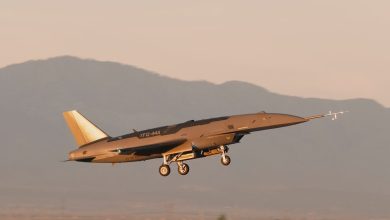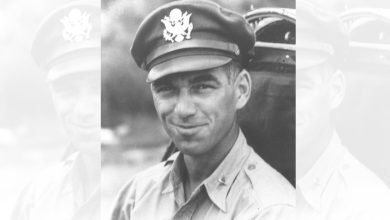KC-46 vision system upgrade slips to 2027, 3 years behind schedule

The KC-46 Pegasus refueling tanker’s troubled remote vision system is now unlikely to see a replacement upgrade until summer 2027, the Air Force said, putting the Boeing program more than three years behind schedule.
An Air Force spokesperson confirmed in an email Wednesday that the current projection for fielding the system, known as RVS 2.0, is roughly two years away, but did not say what is causing the latest schedule slip. Boeing referred questions to the Air Force.
“The Air Force and Boeing are exploring opportunities to prevent or mitigate the slip in schedule,” the spokesperson said.
Older refueling tankers like the KC-10 Extender and KC-135 Stratotanker require boom operators to look through a window in the back while steering a boom into the receiving aircraft. KC-135 boom operators must lie on their stomachs while doing so.
When the KC-46 was designed, it promised a major change to how that work is done. Boom operators in the Pegasus sit in stations towards the front of the tanker and use cameras, sensors and screens to guide the refueling boom.
But the KC-46’s original Collins-made remote vision system was beset by problems from the start. That faulty vision system does not respond quickly enough to changing sun and shadows, and sometimes produces a distorted image, which the Air Force fears could lead to receiving aircraft getting hit and damaged by the boom.
Boeing developed a replacement, dubbed RVS 2.0, that uses a series of sensors, screens and 4K ultrahigh-definition cameras to produce a 3D, full-color image for boom operators.
RVS 2.0 was initially supposed to be released in March 2024. That deadline has slipped multiple times, due to supply chain problems and delays in the Federal Aviation Administration‘s airworthiness certification process.
Air Force Chief of Staff Gen. David Allvin told lawmakers Tuesday that the KC-46 now has five category 1 deficiencies, two of which stem from its remote vision system.
Allvin predicted RVS 2.0 might need another 18 months of work.
“It’s operating, it’s just not operating as we would expect it to,” Allvin told the House Appropriations Committee.
The KC-46’s stiff refueling boom is also a lingering problem, Allvin said. The tanker still cannot refuel the A-10 Warthog because of that boom stiffness issue, he said, and the service hasn’t tested the KC-46 with the E-7 Wedgetail the service plans to bring into its fleet.
Allvin said that a week ago, he and Air Mobility Command head Gen. Jon Lamontagne met with Boeing Defense, Space and Security head Steve Parker, go “line-by-line” through the outstanding major problems with the KC-46.
“It is capable; it’s not optimal,” Allvin said.
Stephen Losey is the air warfare reporter for Defense News. He previously covered leadership and personnel issues at Air Force Times, and the Pentagon, special operations and air warfare at Military.com. He has traveled to the Middle East to cover U.S. Air Force operations.







